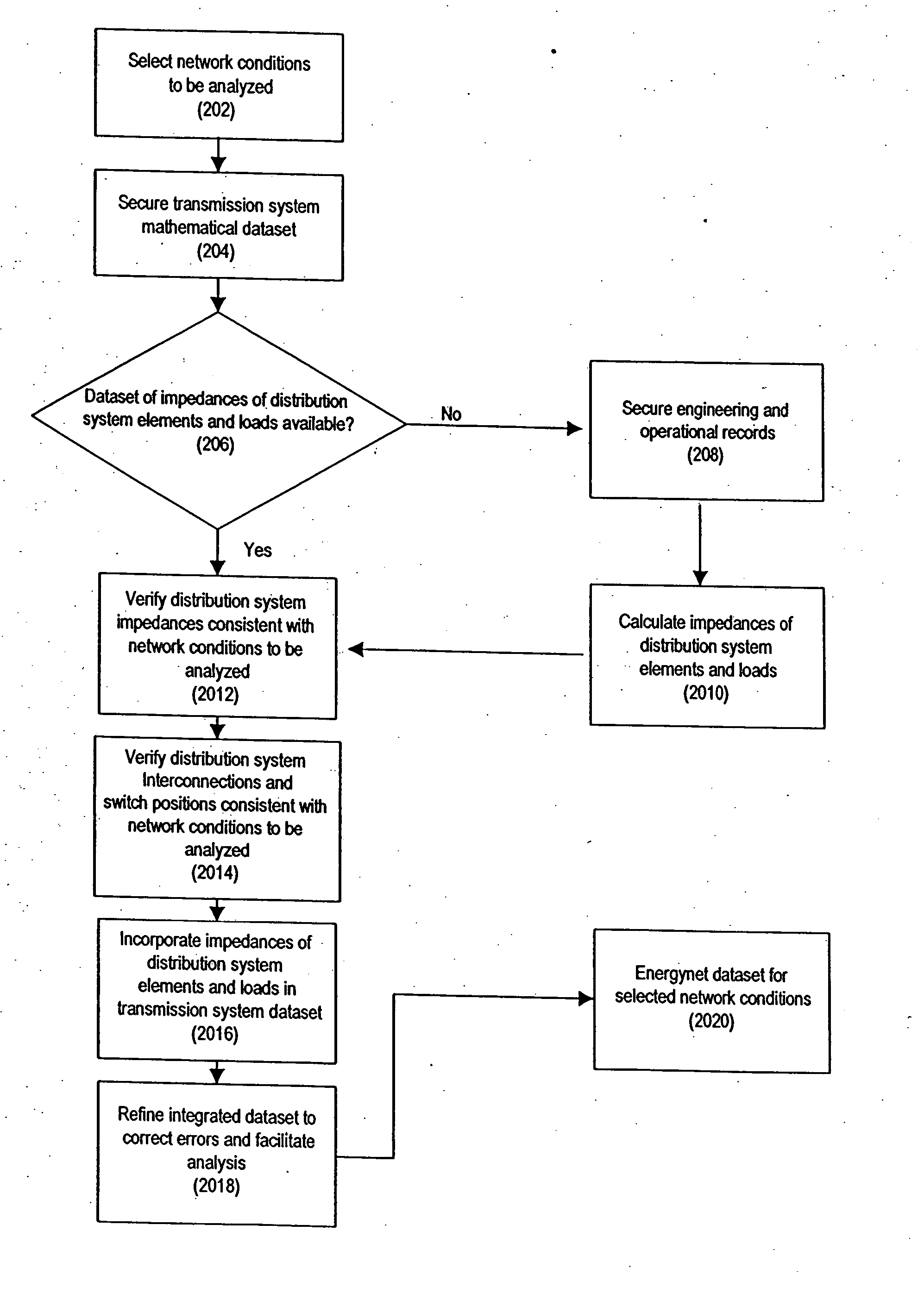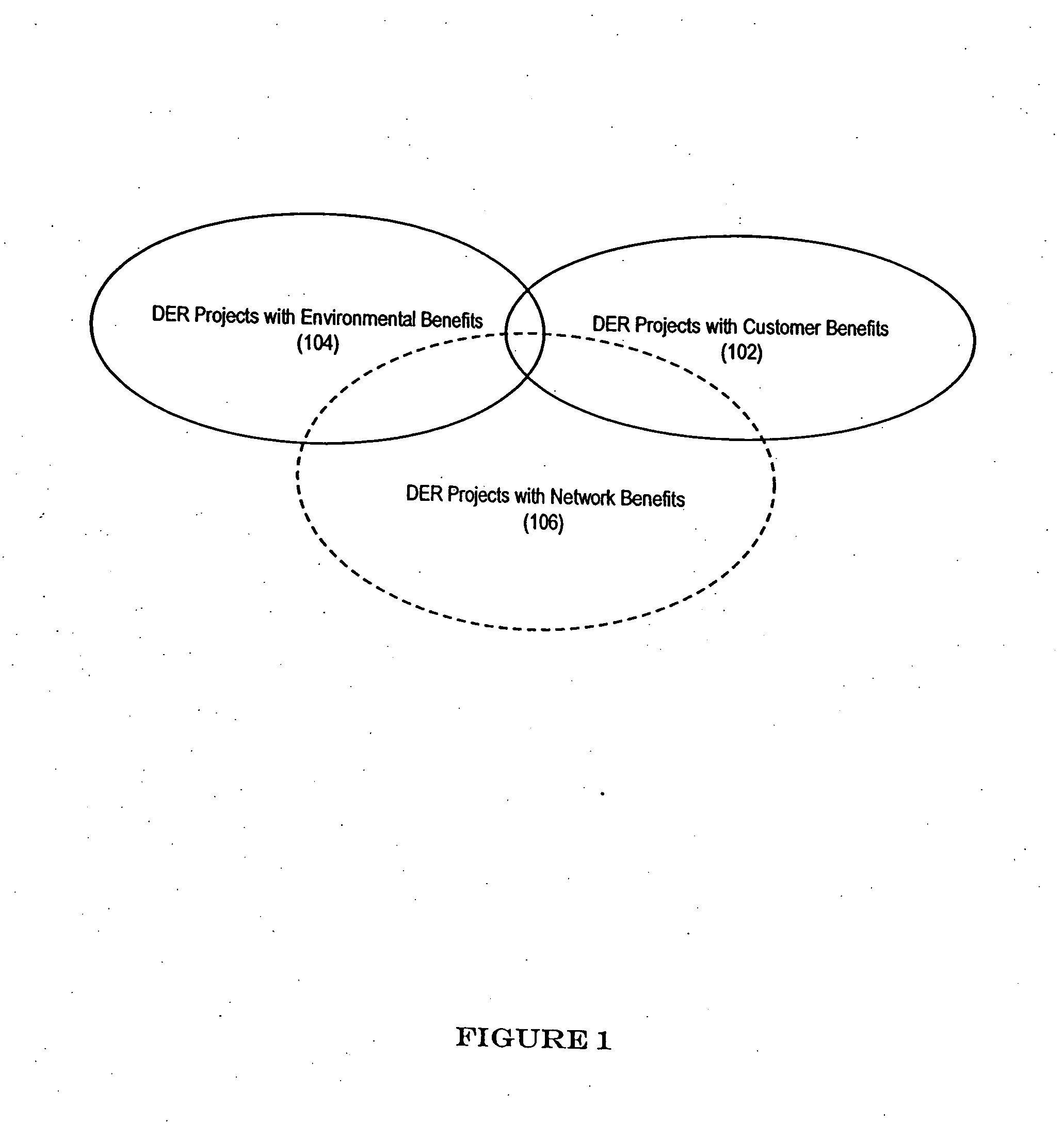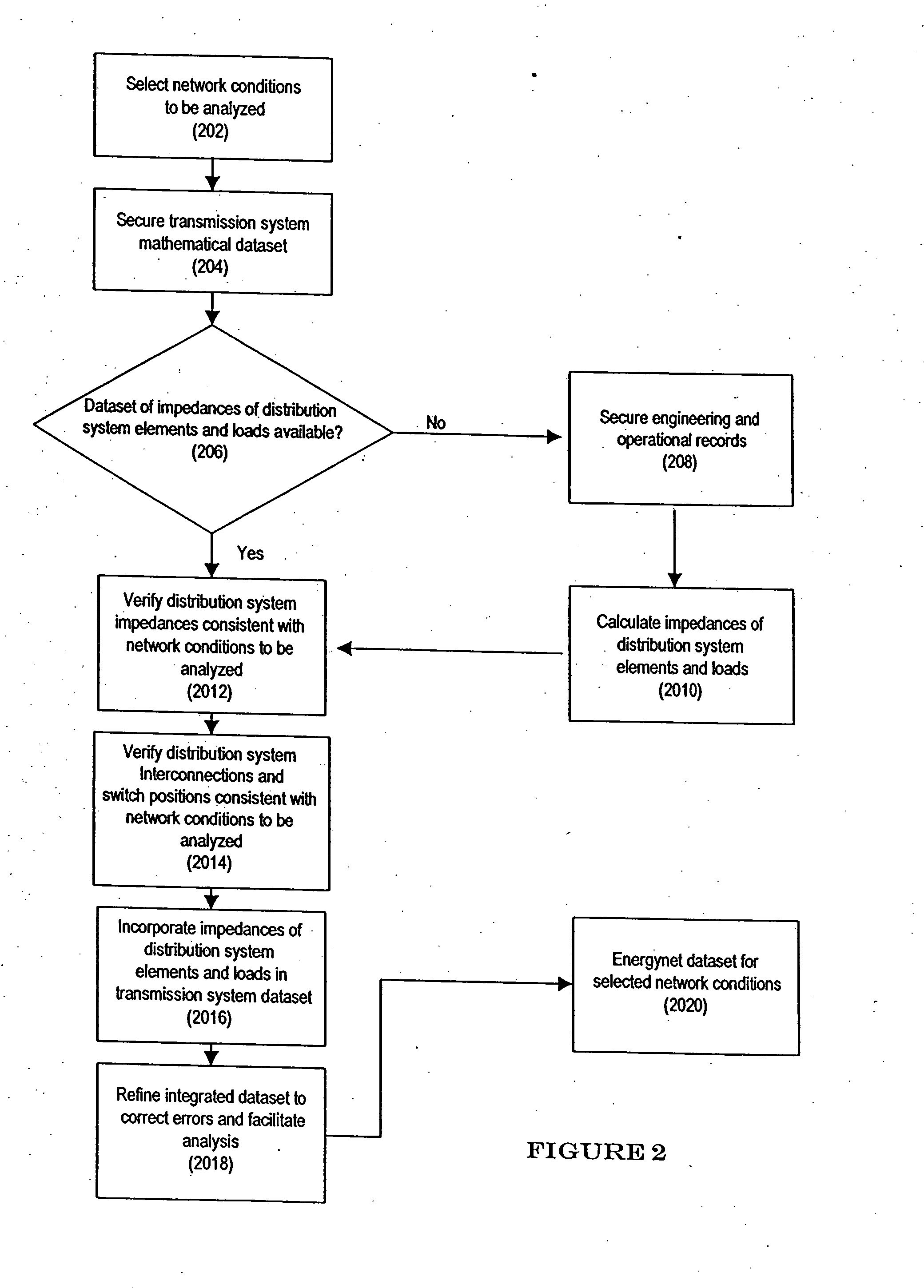However, the prior art includes no methodology that thoroughly assesses and values the potential benefits of DER.
Specifically, current methods fail to thoroughly assess and value the potential benefits of DER to transmission or distribution (T&D) systems themselves.
However, Making Connections makes
no reference to the potential for DER to provide benefits to T&D systems per se, over and above the potential benefits of DER for customers and the environment.
Where impacts of DER on T&D systems are considered, current methods do not provide a means to assess the potential benefits of DER to such T&D systems.
However, this report considers grid impacts of DER as a looming problem that may have to be dealt with if the level of penetration of DER is great enough.
Where DER is considered to have potential benefits for transmission and distribution systems, current methods fail to provide a thorough assessment and valuation of the potential benefits.
However, Silberman offers no means for thoroughly determining what those benefits might be.
The lack of an analytical basis for purported
engineering and
economic benefits of DER to T&D systems prevents sound business decision-making and policy-making that could facilitate the implementation of DER.
These regulations and practices may now, without specific intent, represent barriers to DER projects.
However, removal of barriers to broader deployment of DER is a daunting problem for regulatory authorities, network operators and DER practitioners.
T&D
system analysis and planning methods in the art have significant limitations in making a thorough assessment of the potential benefits of DER to a given T&D network.
As a result, traditional approaches prohibit direct assessment of the extent to which transmission level problems arise from problems in the
distribution system.
Moreover, traditional approaches thus also prohibit direct assessment of the extent to which transmission level problems that may arise from problems in the
distribution system are best mitigated at the distribution level, e.g. with DER.
As a result, traditional distribution analysis approaches prohibit direct assessment of the extent to which distribution level problems arise from problems in the
transmission system.
Traditional approaches thus also prohibit direct assessment of the extent to which distribution level problems that may arise from problems in the
transmission system are best mitigated at the distribution level.
As a result, traditional approaches prohibit direct assessment of the extent to which problems arising on one distribution feeder may affect, or be caused by, or may be best remedied on other distribution feeders.
Thus, the prior art presents significant limitations to a thorough assessment of the potential benefits of DER to a given T&D network.
Traditional methods do not include consideration of these alternatives interchangeably to achieve a certain outcome.
In addition, traditional methods do not consider the broad set of impacts such alternatives may have.
Thus, conventional approaches in the art, by failing to consider a broad set of DER alternatives and broad set of factors impacted by DER, cannot provide a comprehensive assessment of the potential benefits of DER to T&D systems.
These approaches also prohibit direct assessment of the extent to which such non-wires alternatives, particularly those placed in the distribution portion of the network, could be used to augment, defer, or avoid conventional network additions, particularly in the transmission portion of the network.
Neither the Chiang method or the Schleuter method deal directly with the question of the extent to which problems in a
transmission system are the result of problems in the associated distribution system.
Even though Schleuter notes that
voltage instability problems can arise in both distribution systems and in transmission systems, his method does not provide any means for taking into account
voltage instability problems in the distribution system.
Neither Chiang's method or Schleuter's method anticipates consideration of
instability problems in distribution systems in the analysis of instability problems in transmission system.
Also, neither anticipates any analysis to assess the degree to which instability problems in the transmission system arise from or are exacerbated by instability problems in the distribution system.
Also, neither anticipates consideration of the extent to which mitigation of instability problems in the distribution system could also mitigate instability problems in the transmission system.
It does not provide a means to determine whether additions of real or reactive capacity within the system analyzed could mitigate the problems identified and improve
voltage stability and system security.
These responses would presumably be limited to deployment of existing load shed, generation or reactive capacity opportunities.
Chiang's method does not address the question of how generation, load sheds, and reactive capacity, considered as interchangeable alternatives, could be embedded anywhere in the
network on a planning basis to achieve the greatest improvement in
network performance.
Kanoi notes that widely varying conditions in lower voltage-level distribution systems, particularly where
distributed generation units are present, make it difficult to
control power quality merely by controlling voltage and reactive power at the transmission level.
But it does not contemplate the
impact of switching capacitors throughout the
network on conditions throughout the network.
Thus, in a limited way, both the Williams strategy and the Kanoi strategy acknowledge that problems in a transmission system may be the result problems in the distribution system, or that problems in a transmission system may be best mitigated in the distribution system.
However, because both strategies focus on individual lines, not the network, neither is capable of addressing the extent to which problems observed in the transmission system are the accumulation of problems in the distribution system.
The Williams strategy does not consider the impacts of adding or removing reactive capacity on the stability or voltage security of the circuit.
Because both strategies focus on an individual line, neither can address the question of the extent to which problems observed in a transmission system are the result of problems observed in the associated distribution system.
Because both strategies are limited to a
single line and a
single class of capacity, neither can address the broader question of whether mitigating network problems close to their source in the distribution system may be a more effective means of mitigating problems observed at the transmission level.
Again, Ehler's method does not consider any impacts beyond the distribution system, and does not consider any management of loads alone or in concert with other forms of DER for the purpose of enhancing network performance.
His method does not envision taking into account impacts on the transmission system or the coordination of the installation or operation of demand reduction with power generation and / or reactive capacity in the power system.
Again, Sullivan's method does not anticipate the use of dispatchable demand reduction as a way to improve network performance.
However, under Knupp's method power generation units are dispatched based on their operating costs only.
No consideration is given to the
impact the operation of these units may have on network performance, and the dispatch of these units to improve network performance is not anticipated.
The study does not anticipate an assessment by the network operator of the types of DER projects that enhance network performance and / or the development of incentives to actively encourage such projects.
While the study acknowledged that
distributed generation on a distribution feeder can have impacts at the transmission level, no attempt was made to evaluate the impacts of DER implemented at the distribution level on the transmission level, or to assess the potential for improving network performance through interactions between feeders.
This study's approach therefore could not consider how these additions could affect conditions at the transmission level or elsewhere in the network, nor could it directly assess the merits of capacity additions on the feeder vs. capacity additions at the transmission level or elsewhere in the network.
EPRI points out that the limitation of this approach is that the “planned” network
upgrade to be avoided or deferred was identified without consideration of DER in the plan.
A further limitation of such an approach is that the utility is not the decision-maker for DER projects sponsored by a customer or
third party.
Moreover, a utility cannot make an informed
economic evaluation of customer-sponsored DER projects.
The utility cannot determine the value the customer places on the project's customer benefits, particularly as these benefits may include such intangibles as
energy cost certainty, independence, or peace of mind.
The utility also cannot know the actual DER technology costs the customer has been quoted.
Thus, a conclusion under the EPRI methodology that DER additions result in a
least cost solution is at best incomplete, and might be incorrect.
The EPRI method is not capable of assessing or quantifying the stand-alone benefits of DER to the T&D system.
This is due in part to the apparent absence of methods in the prior art that provide a means to directly observe the extent to which problems at the transmission level are caused by or exacerbated by problems at the distribution level (and vice versa).
The absence of a method that provides a thorough,
objective assessment of the potential benefits of DER is also due in part to the apparent absence of methods in the prior art that simultaneously consider a variety of potential DER additions or that appropriately consider the range of impacts of DER.
The absence of a method that provides a thorough,
objective assessment of the potential network benefits of DER is also due in part to the apparent absence of methods in the prior art that consider the potential network benefits of DER independently of the other potential benefits of DER.
We are also not aware of any method in the prior art that identifies a specific, theoretical set of DER projects that will improve or maximize performance of the subject T&D network.
Further, we are aware of no method that identifies such projects for the purpose of guiding policies, identifying consequential barriers to beneficial projects, or designing DER incentives that share value rather than shift costs to non-participants.
A utility cannot accurately incorporate customer economics in its planning, nor can it unilaterally implement purported “
least cost” solutions if they include customer-sponsored projects.
 Login to View More
Login to View More  Login to View More
Login to View More 


